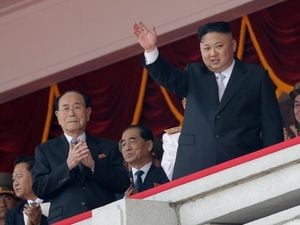As the war between Russia and Ukraine nears its fourth year, a dramatic new front has opened—one that stretches far beyond the traditional battlefields. Over the past week, Ukrainian drone and missile strikes have reached deeper into Russian territory than ever before, targeting oil refineries, petrochemical plants, electrical substations, and other critical infrastructure. The fallout has been immediate: fires, blackouts, fuel shortages, and a sense of vulnerability spreading through regions once considered safe from the war’s reach.
According to the International Energy Agency, repeated Ukrainian drone attacks have now cut Russia’s refining capacity by approximately 500,000 barrels a day. The agency’s estimate, reported on November 4, 2025, underscores the scale of disruption. Ukrainian forces have hit at least 16 major Russian refineries, affecting nearly 38% of the country’s refining capacity, as cited by the Carnegie Endowment and Euronews. While many facilities have managed to resume operations, the relentless strikes have forced Moscow to dip into unused capacity and fuel reserves just to keep production afloat.
The most recent wave of attacks struck with particular ferocity. On the night of November 3-4, drones hit multiple industrial and energy sites across Russia. In Bashkortostan, nearly 1,500 kilometers from the Ukrainian border, two drones targeted the Sterlitamak Petrochemical Plant, causing a partial collapse of its water treatment workshop. Regional head Radiy Khabirov confirmed via Telegram that while both drones were shot down, the debris triggered the explosion and subsequent damage. Remarkably, no casualties were reported among the five workers present at the time, as reported by Reuters and The Moscow Times. The plant, part of the Roskhim chemical holding, is a major supplier for the oil refining, food, medical, and plastics industries.
Elsewhere, the Nizhny Novgorod region saw a drone strike ignite an industrial zone in Kstovo, home to the massive Lukoil-Nizhegorodnaftoorgsintez (NORSI) refinery and the SIBUR-Kstovo petrochemical plant. Local reports indicated that fires broke out at NORSI, one of Russia’s largest refineries with an annual capacity of 17 million tons—a key supplier for the Moscow region. The same refinery was previously attacked just weeks earlier, on October 16.
The attacks didn’t stop there. In the Volgograd region, a fire broke out at the Frolovskaya electrical substation on the evening of November 3, causing power outages in Frolovo and neighboring districts. Governor Andrei Bocharov attributed the blaze to debris from a downed UAV. A “drone danger” alert was declared across the region, and airports in Volgograd, Kazan, Nizhnekamsk, Nizhny Novgorod, Penza, Samara, Saratov, Tambov, and Ufa temporarily suspended all arrivals and departures, according to Kyiv Post.
In the Kursk region, more than 16,000 people lost power after what local governor Alexander Khinshtein described as an “enemy strike” on a substation. A second substation in the village of Belaya caught fire, leaving seven settlements without electricity. Engineers have since made progress in restoring power using backup systems.
Ukraine’s government has been clear about its intentions. The strikes are part of a deliberate campaign to pressure Russia into ending the war. President Volodymyr Zelensky told reporters in Kyiv, “We believe they have lost up to 20 percent of their gasoline reserves – directly as a result of our attacks.” He emphasized that Ukraine’s improved drone reach is “causing real damage,” forcing the Kremlin to import fuel and cut exports. Kyiv’s Security Service chief Vasyl Malyuk added that Ukrainian forces have carried out 160 strikes on refineries and other targets deep inside Russia, with several key refineries hit from September to October 2025 alone, causing a 90% drop in oil production and a fuel shortage exceeding 20%.
Military analysts say that these attacks have already led to fuel shortages and price hikes in Russia, with rationing reported in several regions. The Russian government has responded by deploying reservists to guard key infrastructure, a move reported by Euronews and Reuters. President Vladimir Putin, meanwhile, has vowed to continue the war and has boasted of new weapons, insisting that Russia is prepared for a prolonged conflict.
For the Ukrainian military, the evolution of its drone program has been nothing short of revolutionary. Most of Ukraine’s drone fleet is now produced domestically, with models like the Liutyi—a night-attack drone featuring a modular, easily modified design—becoming symbols of national ingenuity. These drones, often built in small workshops, have doubled their range over the past year, now flying up to 1,000 kilometers into Russian territory. The cost-effectiveness is striking: while long-range UAVs once cost hundreds of thousands of dollars, they can now be built for roughly $55,000 each. This makes them a potent weapon against Russia’s expensive and, at times, overwhelmed air defense systems.
“Drones are evolving,” said a Ukrainian commander known only by the call sign “Fidel,” as quoted by Euronews. “Instead of flying 500 kilometers, they now fly 1,000. For us, this is a sacred mission.” The strategic shift has handed Kyiv both symbolic and tactical advantages, eroding Russia’s sense of domestic security and forcing the Kremlin to adapt to a new kind of warfare—one conducted not just at the front but deep within its own borders.
Russia’s response has been swift but not always effective. The Russian Defense Ministry reported intercepting 85 drones across eight regions on November 4, including Voronezh, Nizhny Novgorod, Belgorod, Kursk, Volgograd, Lipetsk, Bashkortostan, and Saratov. In addition, 83 drones were destroyed over seven other regions, according to the ministry’s daily report. Despite these defensive measures, the sheer volume and reach of Ukraine’s attacks have left a mark on Russia’s critical infrastructure.
As the conflict continues, Ukraine has been pressing the United States for long-range Tomahawk missiles to further expand its strike capabilities. U.S. President Donald Trump has expressed mixed views on the matter, at times suggesting support for such aid but more recently voicing opposition, citing U.S. military needs and concerns over escalation. Moscow, for its part, has warned Washington that supplying Tomahawks would mark a “completely new stage of escalation,” as President Putin put it.
The war’s economic equation is shifting. The ability of Ukraine to inflict significant damage at relatively low cost is forcing Russia to confront vulnerabilities it hadn’t anticipated. As Adriano Bosoni, director of analysis at RANE, told Euronews, “For most of the war, Russia operated on the assumption that its own territory was safe. That is no longer the case.”
For now, the strikes continue, each new attack sending ripples through Russia’s economy and psyche. The war’s front lines are no longer only in Donetsk or Kherson—they now stretch all the way to the Urals and beyond, reshaping the conflict’s dynamics and raising new questions about how, and when, it might finally end.






